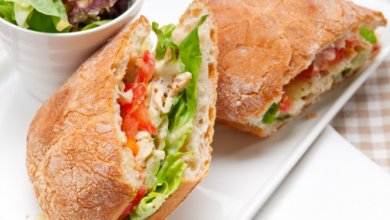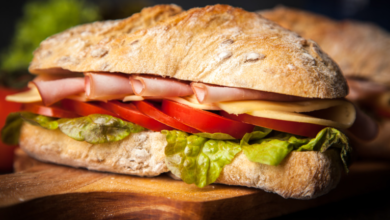My Ciabatta Dough is So Wet, How Do I Fix It?

What To Know
- In this comprehensive guide, we will delve into the intricacies of ciabatta dough, uncovering the secrets to achieving the perfect balance of wetness and elasticity.
- Sprinkle in small amounts of flour at a time while kneading the dough until it reaches the desired consistency.
- Yes, you can use a stand mixer fitted with a dough hook to mix and knead ciabatta dough.
Craving the iconic airy texture of ciabatta but grappling with a frustratingly wet dough? You’re not alone. Many aspiring bakers face this common obstacle, leaving them questioning the reasons behind their dough’s excessive moisture. In this comprehensive guide, we will delve into the intricacies of ciabatta dough, uncovering the secrets to achieving the perfect balance of wetness and elasticity.
Understanding the Unique Nature of Ciabatta Dough
Ciabatta dough stands out from the crowd due to its exceptionally high hydration level. This means that it contains a higher proportion of water to flour compared to other bread doughs. This high hydration contributes to ciabatta’s signature open crumb structure, characterized by large, irregular holes. However, achieving the right level of wetness is crucial for a successful bake.
Common Causes of Excessive Wetness
Identifying the root cause of your wet ciabatta dough is essential for troubleshooting and preventing future issues. Here are some of the most common culprits:
- Incorrect Flour Measurement: Using too little flour can result in a dough that is too wet. Ensure you follow the recipe’s flour measurement precisely, using a kitchen scale for accuracy.
- High Water Content: Some recipes may call for more water than others. If your dough seems excessively wet, consider slightly reducing the water content by 10-20%.
- Warm Water: Using warm water can accelerate the yeast’s activity, making the dough rise more quickly and become wetter. Stick to cool or lukewarm water for optimal dough handling.
- Undermixing: Inadequate mixing can prevent the flour from fully absorbing the water, leading to a wet dough. Mix your dough thoroughly until it forms a cohesive mass.
- Overfermentation: Allowing the dough to rise for too long can also contribute to wetness. Follow the recipe’s recommended fermentation time and avoid overproofing.
Tips for Achieving the Perfect Hydration
Mastering the art of ciabatta dough requires careful attention to hydration. Here are some tips to guide you:
- Use a Kitchen Scale: Measuring ingredients by weight ensures accuracy and consistency.
- Add Water Gradually: Don’t pour all the water into the dough at once. Gradually add it while mixing until the dough reaches the desired consistency.
- Knead the Dough Thoroughly: Kneading helps develop the gluten network, which gives the dough its elasticity and prevents excessive wetness.
- Check the Dough’s Consistency: The dough should be slightly sticky but not overly wet. If it sticks too much, add a small amount of flour; if it’s too dry, add a touch of water.
- Test the Windowpane: To determine the dough’s gluten development, stretch a small piece of dough between your fingers. If it forms a thin, translucent membrane without tearing, your dough is ready for the next step.
Troubleshooting Techniques
If you encounter a wet ciabatta dough, don’t despair. Here are some troubleshooting techniques to save your bake:
- Add Flour Gradually: Sprinkle in small amounts of flour at a time while kneading the dough until it reaches the desired consistency.
- Let the Dough Rest: Allow the dough to rest for 15-30 minutes after kneading. This resting period gives the flour time to absorb the water fully.
- Stretch and Fold: Gently stretch and fold the dough several times to strengthen the gluten network and reduce wetness.
- Retard the Dough: Refrigerating the dough for several hours or overnight can slow down the fermentation process and allow the dough to develop more strength.
In a nutshell: Mastering the Art of Ciabatta Dough
Achieving the perfect wetness balance in ciabatta dough is a skill that requires practice and patience. By understanding the unique nature of ciabatta dough, identifying common causes of excessive wetness, and implementing the tips and troubleshooting techniques outlined in this guide, you can confidently conquer this culinary challenge. Remember, the journey to baking a flawless ciabatta is an ongoing one, filled with both triumphs and lessons learned.
Common Questions and Answers
1. Can I use a stand mixer to make ciabatta dough?
Yes, you can use a stand mixer fitted with a dough hook to mix and knead ciabatta dough. However, it’s important to mix on low speed to prevent overworking the dough.
2. How long should I knead ciabatta dough?
Knead the dough for about 10-15 minutes by hand or until it becomes smooth, elastic, and passes the windowpane test.
3. What is the ideal temperature for fermenting ciabatta dough?
The optimal temperature for fermenting ciabatta dough is between 75-80°F (24-27°C). This allows the yeast to work effectively and develop the dough’s flavor.





